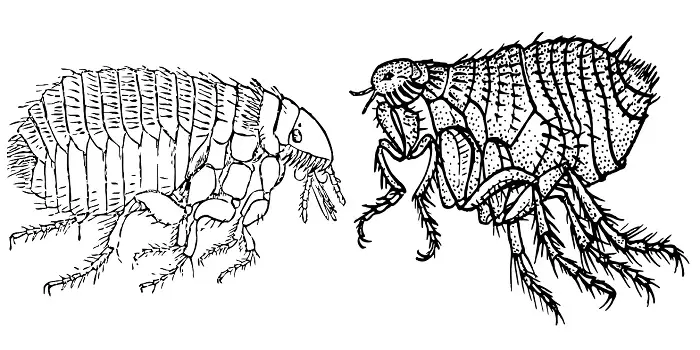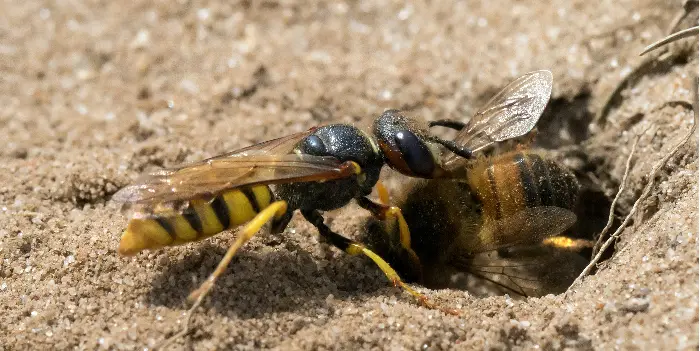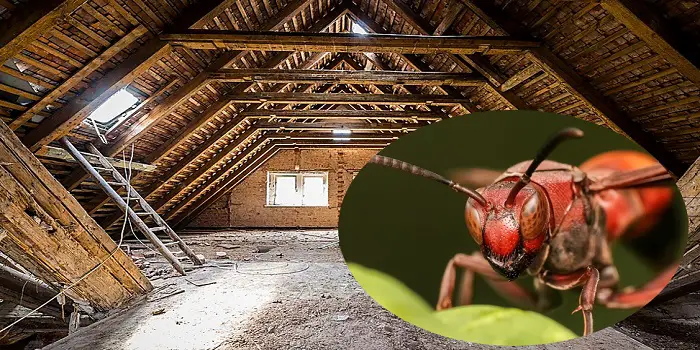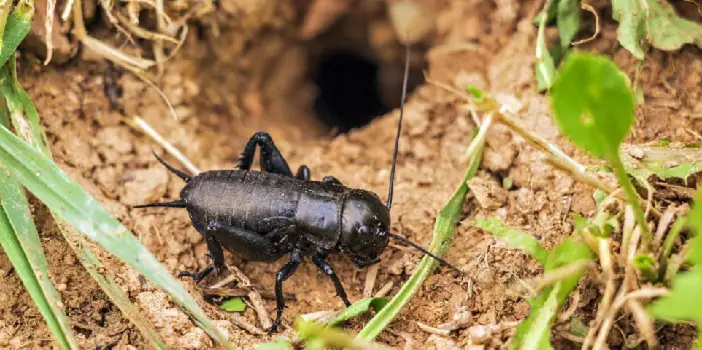
If you’ve got a pet, you have heard about or dealt with fleas.
A nuisance to furry animals around the world, they cause pain, discomfort, and irritation for any creature unfortunate enough to end up carrying them.
Worse yet, fleas are not the only small critters that can invade your home and your pet’s personal space, and they’re difficult to distinguish from fleas.
Although the insects discussed here differ from fleas, that does not inherently mean they are more or less harmful.
Even the least dangerous of these insects should still be treated as a sort of threat or simply as an invading force, and proper precautions should be taken before you’ve identified the insect you’re dealing with.
With this in mind, this piece will discuss what fleas are, how you can tell them apart from other insects, and what insects most closely resemble the features of a flea.
Additionally, this article will provide some information on each of these lookalikes so that you can determine whether or not your home/pets are at risk.
What are Fleas – How to Identify Them?
Plain and simple, a flea is a tiny, light brown insect that averages around 5 millimeters in size.
Its body is flat, and they have no wings to speak of, but that’s for a good reason.
Their defining feature is their incredible ability to jump at comparatively superhuman heights, reaching 30 centimeters in height.
Thirty centimeters sounds measly to humans; that’s just 30% of a meter, hardly impressive.
Another way to think about it is this: 30 cm is over 80 times larger than their average height.
This would be similar to a 5-6-foot-tall (approx. 1.5-2 meters) human easily jumping 480 feet (~145 meters) into the air.
Why use wings when they can easily bound over anything in your way?
Being able to jump this far with one leap means that they are able to spread incredibly quickly with relatively little effort.
Fleas are also well known for their tendency to bite their host, which is especially dangerous since fleas often carry diseases – the Black Plague wasn’t spread by rats but by the fleas that tagged along with the rats.
While a similar plague (barring COVID, of course) may not be a primary concern, researchers have continued to find that fleas still carry a plethora of dangerous bacteria and pathogens harmful to animals & humans alike.
So, knowing these primary assets, identifying a tiny brown, flat-bodied, wingless flea that can jump incredibly high should be a cinch, right?
If only it were so easy.
What Bug Look and Jump Like Fleas – But Aren’t?
Identifying a flea is already a challenge in itself due to its nearly microscopic size, its jumping capabilities, and its rather muted colors.
Though their characteristics may appear defining at first, it has been found that there are several other insects that are identical in looks, size, jumping capabilities, and even their capacity to bite.
Here are some of the most commonly confused bugs that have people thinking they’re dealing with an infestation of fleas.
1- Bed bugs
These bugs are perhaps the most similar to fleas out of this entire list in terms of their looks.
They’re flat, brown, and essentially the same size (5 mm on average) as fleas.
Bed bugs like to make their homes, where else, within the fibers of your bed.
While they call beds home, they are still bloodthirsty for both humans and animals, whichever is easier to get and can become a big problem if left unchecked.
Similarities
Bed bugs are similar for all of the reasons already stated: they look nearly identical, being flat, brown, and tiny, and they love to bite humans/animals to get their sustenance.
Their main meal of choice is blood almost exclusively, just like fleas, and they also lack wings.
This makes it quite difficult to tell bed bugs apart without further research.
Differences
There are 3 ways to discern a flea from a bed bug: the leap, the bite marks, and the eggs.
First, bed bugs cannot jump, which is the most significant indicator here.
If it can’t jump, then it isn’t a flea.
Second, flea bite marks are clustered and resemble mosquito bites. Bed bugs are slightly larger and have flat welts.
Finally, if you find bed bug eggs, they will appear black – fleas, opposingly, lay bright white eggs.
2- Springtails
These little insects love moisture and feed on mold and fungus.
Springtails are generally grayish or brown in color and can easily be identified as flea due to their ability to jump high, which is a key part of their namesake.
Additionally, these bugs are quite minor and barely reach a few millimeters in size as a fully grown adult.
Similarities
They’re small, can leap great distances, and lack wings, all similar traits to a flea.
Their size is a great asset to them, enabling them to feed as they please with little risk of detection.
Being able to jump is the largest cause for being misidentified as a flea alongside their brownish color.
Differences
First, springtails do not bite living hosts like fleas (or bed bugs) do.
Instead, as previously mentioned, they are far more interested in feeding on organic matter or fungi that are decaying to sustain themselves.
Because of this, they never bother humans or animals since they do not need them.
Second, their body is differently shaped compared to flea.
This is hard to tell without getting an extremely close look, but springtails have a rounded body that is soft – fleas are flat and have a durable structure.
3- Flea beetles
Flea beetles are the plant-loving ‘cousins’ to fleas (used loosely since they are not nearly that closely related).
Instead of spending time munching on humans for sustenance, they focus on various plants.
Although they have different food preferences, these little guys are often mistaken for fleas for other reasons.
Similarities
Like fleas, flea beetles are great jumpers with a similar color scheme.
These bugs jump from plant to plant among great fields rather than from human to human, but they are still regarded as a pest because of their ability to spread quickly.
Additionally, their brownish coloring makes them the perfect candidate to frame fleas for their presence.
Differences
Flea beetles do not bite animals or humans and exist in an entirely different habitat than fleas.
Don’t be fooled; they can still bite; they just prefer to chew through thousands of leaves over time rather than through the skin.
Accordingly, it is rare to find them inside any houses unless they have an abundance of plants.
4- Froghoppers
Froghoppers are sap-sucking insects that are brown and color and measure out to about 6 mm on average.
They are well known for their tendency to leave plants coated in foamy spit once they are done feeding, but they also beat the flea at their own game in jumping.
This makes them incredibly easy to be mistaken for a flea.
Similarities
So, the color and jumping capability of froghoppers certainly both match that of a flea.
Being brown and capable of jumping nearly 70 cm, it’s no wonder that froghoppers are constantly being misidentified as fleas.
Differences
The froghoppers jumping ability lends quite well to one of its primary differences.
Jumping up to 70 cm in one bound is over double what a flea can jump, though it would still be difficult to tell these two apart with just this information alone.
Froghoppers also occupy an entirely different habitat than fleas and have no interest in using animals/humans for a meal.
5- Grasshoppers and Crickets
Grasshoppers and crickets are both smaller insects that have great leaping capabilities.
They are often found outside during the summer months and prefer to stay as from humans as they can.
Crickets are generally omnivorous and will opt to eat whatever is most easily available, whereas grasshoppers are herbivorous.
Crickets tend to be yellowish-brown in color, and grasshoppers are usually varying shades of green/brown.
Similarities
In terms of colors, these two insects are quite close, though they both tend to lean towards green (grasshoppers) and yellow (crickets).
They are also capable of making jumps similar to that of the flea in comparison to their size.
Differences
Regarding the rest of this list, these two are harder to mistake for a flea than the others.
Right away, both crickets and grasshoppers are much larger than fleas.
They also inhabit entirely different ecosystems – grasshoppers, being herbivores, want nothing more than to stay in the fields, and crickets prefer to hunt/mate at night away from human activity as part of their native environment.
The Conclusion
Though vastly different upon closer inspection, all of these insects can easily be mistaken for fleas.
Fleas can be difficult to identify in any case, but hopefully, this article has given some tools to make the distinction easily in the future.

Welcome to ProShieldPest.com. I am Tina Jones. I have been working as a pest removal professional in Winslow, Arizona lately. At present, I love to spend my time with my family as a retiree.
Here I share all my knowledge and experiences to help people understand better how they can stop pests at their homes without actually killing them. Hopefully, the information you will find here will help in safeguarding your home! You can check more about me here.




